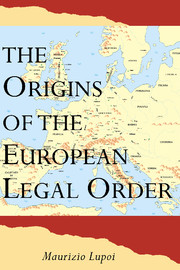Book contents
- Frontmatter
- Contents
- List of abbreviations
- 1 The early Middle Ages: a comparative approach
- 2 A historical and institutional profile of the Roman empire in the fourth and fifth centuries
- 3 Excursus I: ‘Barbarians’
- 4 Historical and institutional profiles of the ‘new dominations’
- 5 Excursus II : The days of the week
- 6 Excursus III: Anglo-Saxon charters
- 7 Consensus by assembly
- 8 Excursus IV: Authority and consensus in judicial decisions
- 9 Public allegiance
- 10 Excursus V: The Anglo-Saxon writ
- 11 Private allegiance
- 12 Open legal systems
- 13 Excursus VI: Textual ‘coincidences’ in documentary forms
- Chronology of popes and sovereigns
- Appendix of sources
- Bibliography
- Index
10 - Excursus V: The Anglo-Saxon writ
Published online by Cambridge University Press: 04 February 2010
- Frontmatter
- Contents
- List of abbreviations
- 1 The early Middle Ages: a comparative approach
- 2 A historical and institutional profile of the Roman empire in the fourth and fifth centuries
- 3 Excursus I: ‘Barbarians’
- 4 Historical and institutional profiles of the ‘new dominations’
- 5 Excursus II : The days of the week
- 6 Excursus III: Anglo-Saxon charters
- 7 Consensus by assembly
- 8 Excursus IV: Authority and consensus in judicial decisions
- 9 Public allegiance
- 10 Excursus V: The Anglo-Saxon writ
- 11 Private allegiance
- 12 Open legal systems
- 13 Excursus VI: Textual ‘coincidences’ in documentary forms
- Chronology of popes and sovereigns
- Appendix of sources
- Bibliography
- Index
Summary
Current scholarship
Historians of English law are always struck by the persistence, over almost a thousand years, of a type of document – the writ - which is credited with creating a centralised system of justice, a single hierarchy of courts, and even a single law which covered the entire country.
The predominant opinion up to the end of the nineteenth century, on the authority of the French diplomatist Arthur Giry (who, incidentally, knew nothing about the Anglo-Saxon sources), viewed the writ as a Norman innovation which entered England after the Battle of Hastings in 1066, the origins of which must therefore be sought in administrative practices that had developed on the other side of the Channel. In 1896, however, W. H. Stevenson argued for the existence of an Anglo-Saxon documentary tradition, although he lamented the inadequacy of diplomatic studies in England. In 1918 Harry Bresslau, inspired by Stevenson, suggested with a wealth of supporting argument that the writ was of English origin. This was indeed the function of the writ from the twelfth century onwards, which Glanville identified in his Tractatus de legibus et consuetudinibus Angliae of 1118, the work that secured him a pre-eminent place in the history of English law.
- Type
- Chapter
- Information
- The Origins of the European Legal Order , pp. 303 - 320Publisher: Cambridge University PressPrint publication year: 2000

